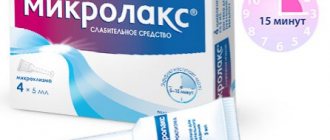Poliomyelitis is one of the dangerous viral diseases that affects the human nervous system and is accompanied by motor disorders. Today, in most developed countries of the world, the infection was overcome thanks to routine vaccination, which made it possible to prevent epidemics and the spread of viral agents among the human population.
Prevention of polio begins at three months of age and is mandatory. In our country, two types of vaccines against infectious disease are used, namely oral and inactivated vaccines, each of which has its own advantages and disadvantages.
Starting from the first months of life, babies in the clinic are given oral drops against polio. According to research, this vaccine allows you to create long-term immunity in more than 95% of vaccinated children and reliably protect their body from all strains of the virus after the first course of vaccination. What are anti-polio drops, and how safe are they for a child’s body?
How do vaccines that are dropped into the mouth work?
In modern medical practice, several types of vaccines are used, which are administered through the mouth without the use of a syringe and needle.
Such preventive drugs include oral polio vaccination, rotavirus vaccine, and typhoid fever. All these solutions are highly effective and contribute to the formation of a stable immune response in patients.
Anti-polio drops
A prominent representative of oral vaccination is the live polio vaccine. This drug includes live but weakened strains of the polio virus that are not capable of causing post-vaccination infection.
The action of the drops is aimed at creating reliable immunity against the “wild” virus by entering the intestinal cavity. Immediately after penetration into the digestive tract, the pathogen begins to multiply.
Typically, the process lasts about four weeks. All this time, the vaccinated patient’s body is actively fighting pathogenic microorganisms, reacting to them by developing stable immunity.
Many parents believe that live oral polio vaccination is a relic of the past and poses a threat to the child’s health, as it can provoke a real infection of the body.
In fact, such judgments are wrong. During the production of the vaccine, the developers were able to prove the safety of anti-polio drops.
Once they enter the intestinal cavity, they are not capable of causing infection of the body, but only lead to the formation of immune complexes that destroy pathogenic viruses.
Ways of transmission of the disease
The main methods of transmission of infection are through household contact and contact with feces of a virus carrier. Poliomyelitis is transmitted through unwashed hands, common household items (hygiene products, toys, etc.), food and water contaminated with intestinal waste or saliva of a patient or a carrier of the virus. In more rare cases, the source of infection is flies, which carry pathogens from feces and other contaminated objects on their legs and body.
You can become infected with polio by living next to a sick patient or a virus carrier, swimming in a polluted body of water, eating unwashed and unheat-treated foods, collecting water from untested sources, etc.
The high contagiousness of the virus during the oral-fecal route of infection with poliomyelitis is due to its stability in environmental conditions: virions persist in water for at least 3 months, and in feces - up to six months. An additional risk factor is the warm season: most infections occur between June and October. The risk group for developing the disease includes children from six months to 5 years.
Under the influence of ultraviolet radiation, drying, boiling and treatment with chlorine compounds, the virus is quickly inactivated, so airborne droplets are not a common method of transmitting the pathogen, and disinfection reduces the risk of infection.
The method of entry of the pathogen into the body determines the mechanism of transmission of the virus and its progression in the body.
Virions of the virus enter the body through the oral cavity from the surface of the hands, along with water or food. The places of primary localization of the virus are the mucous membrane of the oropharynx and small intestine, group accumulations of lymphoid tissue in the small intestine (Peyer's patches) and lymph nodes.
Together with the flow of blood and lymph from the lymphoid tissue, virions penetrate into the central nervous system, spinal cord and internal organs. Damage to peripheral and cranial nerves and motor fibers affects the innervation of muscles and leads to the development of paralysis.
In children who have received the vaccine, the body is resistant to the disease, but this does not exclude virus carriage and the possibility of transmitting virions to an unvaccinated person.
Features of the use of oral vaccine
Live polio vaccine is a liquid that has a rich red color and a characteristic bitter-salty taste. This solution, after oral administration, penetrates the distal parts of the digestive tract (intestines).
Here, viruses begin their active reproduction, in response to which specific immunity to infection is formed. The first administration of an oral vaccine to an infant is indicated at six months.
Before this, the child is vaccinated twice with an inactivated suspension against polio. According to the instructions, the drops should be instilled into the mouth at the base of the tongue. It is in this zone that the maximum number of lymphoid structures responsible for the production of immune cells is localized.
For older children and adolescents, the vaccine is administered to the tonsils, where there are no taste buds. If the baby develops a gag reflex or an aversion to the unpleasant taste of the solution, it can be dripped onto the sugar and only then introduced into the mouth.
To apply the drops correctly, you should use a syringe without a needle. The pediatrician always warns that within an hour after vaccination the child is not allowed to drink or feed him any food.
For several days after vaccination, the baby should not be introduced into the diet with unfamiliar foods or dishes that include potential allergens (chocolate, citrus fruits, eggs).
Contraindications for use
There are temporary or permanent contraindications to vaccination against polio with live vaccine.
Temporary reasons for obtaining a medical exemption from vaccination include:
- acute viral diseases and intestinal infections in a child;
- exacerbation of chronic pathological conditions;
- the presence of hidden signs of an inflammatory process in the body (assessed based on the results of laboratory tests).
If such contraindications to vaccination are determined in a child, the vaccination is postponed until complete recovery.
After normalization of the condition, immunization is carried out according to the generally accepted schedule.
Among the absolute contraindications to vaccinating a baby against polio are:
- development of an allergic reaction in a young patient to a previous vaccine administration;
- pathological conditions with severe dysfunction of the immune system;
- oncological diseases;
- complex variants of the course of pathologies of the central nervous system;
- state of deep prematurity.
Before each vaccination, the child must be examined by a qualified specialist and make a conclusion about the possibility or impossibility of his vaccination at the time of the examination.
It is useful for parents to know about polio vaccination
- It is important to remember that parents have the right to refuse a live vaccine, replacing it with a non-live one, but in this case, vaccination will be paid.
- Parents of children with allergies should first consult an allergist to obtain information on antihistamines and the need for vaccinations.
- It is worth remembering that visiting a healthy but unvaccinated child is allowed; you can apply for transfer to a group of unvaccinated children, or a group where children were vaccinated a long time ago.
- If there are pregnant or lactating women in the family, then vaccination against the virus for children from this family should be postponed.
Normal reaction
As a rule, the polio vaccine is absolutely safe and is normally tolerated by the child’s body. Despite this, in some cases, after the vaccination procedure, children may develop disturbances in the functioning of internal organs, which experts associate with the specific reaction of the child’s body to the administration of the vaccine drug.
Normal reactions include:
- increase in general body temperature to 37.5-380 C;
- decreased activity and poor appetite;
- lethargy and tearfulness;
- upset stool, nausea and single vomiting.
All these pathological manifestations are not dangerous for the normal functioning of the child and disappear on their own 1-2 days after vaccination. If the baby experiences persistent hyperthermia or the development of more serious disorders, his parents should immediately show the baby to a specialist.
Side effects of polio drops and complications
Side effects and complications after vaccination are recorded extremely rarely. In most cases, they arise due to non-compliance with basic immunization rules, decreased immunity, or poor quality of the vaccine. The consequences of vaccination with live polio vaccine are called vaccine-associated polio.
The pathological condition develops with a frequency of 1:30000 and is manifested by the following symptoms:
- increase in general body temperature to 39-40 C;
- catarrhal manifestations in the form of runny nose, coughing and sneezing;
- skeletal muscle weakness;
- digestive disorder;
- intense headaches;
- development of seizures and flaccid paralysis;
- general weakness, lack of appetite, restless sleep.
Vaccine-associated polio can occur in different forms. With a mild degree of symptoms, they speak of an abortive form of the course of complications, since they disappear within a month after development.
The paralytic version of the disease is associated with the occurrence of paralysis and requires long-term treatment. A severe variant of vaccine-associated polio causes skeletal muscle atrophy and leads to disability in the patient.
If any complication occurs after vaccination, you should immediately consult a doctor for help.
If necessary, a small patient is placed in a hospital for a full examination and treatment of pathological disorders. The treatment regimen is developed individually and depends solely on the severity of the disease process.
What is polio
Nowadays it is rare to see an adult in Europe, much less a child, wearing thick orthopedic shoes. In the last century, many children aged 5-10 years old were severely limping and were forced to compensate for difficulties when walking by wearing special shoes. These were minimal consequences of polio. At that time, the spread of poliovirus was in the nature of a pandemic - an epidemic that swept the whole world.
Humanity knew no salvation from the terrible infection. The virus was transmitted through the air, through household contacts. The pathogenic pathogen survived well in the external environment, tolerated low and high temperatures, and was not afraid of ordinary disinfectants - bleach, potassium permanganate. The virus could live in water, milk, and feces.
Mouth drops or injection: which is better for vaccinating children?
It is impossible to say for sure which polio vaccine is better: a live suspension or an inactivated drug. After all, each vaccine solution has its own advantages and disadvantages.
The main advantage of the live vaccine is that its administration allows the formation of long-term immunity against “wild” strains of the polio virus at the intestinal level, which is the entry point for infection.
In addition, to administer an oral drug, you do not need to make a painful injection and once again injure the child. However, after using such a solution, there is always a risk of developing vaccine-associated poliomyelitis in children with weakened immunity or latent forms of the inflammatory process.
Among the positive aspects of the inactivated vaccine, it is important to highlight the absence of the risk of a post-vaccination variant of the disease. The main disadvantage of the drug is the intramuscular injection of the solution, which causes discomfort to the child and causes a feeling of fear before the procedure.
Is a child contagious after vaccination?
Parents of unvaccinated children worry about spreading the disease. They ask pediatricians whether a child can become infected after vaccination. If a patient is given an inactivated vaccine subcutaneously or intramuscularly, there is no risk of infection.
When using a live vaccine, the patient is at risk of developing the disease. But this happens very rarely.
The process can begin after the first injection. If re-vaccination has been carried out, the risk is reduced. During the third procedure it is absent.
Infection by injection of the drug is possible in patients with the following diseases or conditions:
- congenital or acquired immunodeficiency;
- infants with abnormalities in the development of the immune system;
- pregnant women.
Any child who has been vaccinated orally with active microorganisms should not attend educational institutions for 60 days.
Once infected, polio can be transmitted to other people in the following ways:
This type of infection resolves without complications. With the right treatment, the disease goes away quickly and in a milder form.
Therapy is prohibited without consulting a doctor. It is prescribed only when laboratory tests are completed and the diagnosis is confirmed.











